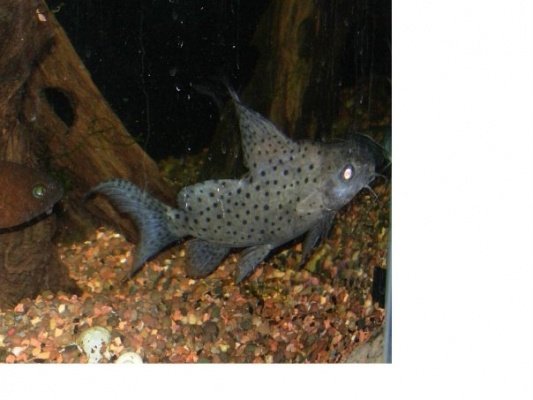Have a featherfin (squeaker, whatever you prefer) catfish that recently developed white spots around his mouth, which have since spread over his body. He's eating just as well as ever but seems to be breathing rather heavily. The only change within the past month is the addition of two bleheri from healthy tank (no problems so far). The water temp is about 79, trying to work it up a bit at a time. Water parameters: ammonia & nitrite = 0, nitrate = 20+ (a bit over 20 but well below 40). This is the same tank that had a random ammonia spike about 2 months ago but that's been resolved for quite a while. First thought was ick but don't see how it could have just developed if not introduced by a new addition to the tank. Here are the pics:
picture 1
picture 2
Members of another forum suggested adding well-dissolved salt to the water but I thought salt was bad for catfish. Any ideas of what this is and how it should be treated?
Thanks!
picture 1
picture 2
Members of another forum suggested adding well-dissolved salt to the water but I thought salt was bad for catfish. Any ideas of what this is and how it should be treated?
Thanks!

